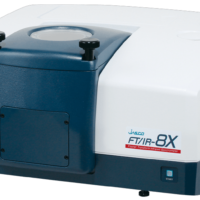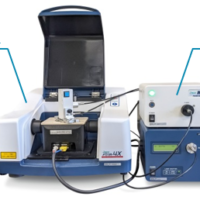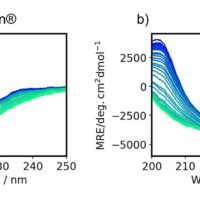Introduction
EU Directive for RoHS (The restriction of the use of certain hazardous substances in electrical and electronic equipment) obligates the electrical and electronic equipments manufacturers to bear the waste disposal cost of the products introduced into Europe, and restricts the use of following 10 substances (as of 2019).
- Mercury
- Cadmium
- Lead
- Hexavalent chromium
- Poly Brominated Biphenyl (PBB)
- Poly Brominated Diphenyl Ethers (PBDE).
- Di-2-ethylhexyl phthalate (DEHP)
- Dibutyl phthalate (DBP)
- Benzylbutyl phthalate (BBP)
- Diisobutyl phthalate (DIBP)
Along with the restriction, it is now imperative to judge the presence of the restricted substances and to analyze the contents in the products introduced to the market and recalled from the market. This is to report on the PBDE. It is possible simply to identify the presence of PBDE even by the conventional ATR method in the mid-infrared (mid-IR) region. However, the identification might be difficult depending on the resin type, the structural isomers and the homologs. Moreover, the absorption by some additives could be sometimes big obstruction. On the other hand, their own peaks of the absorption due to additives and fire retardants sharply appear because there is little absorption of the plastics itself in the far-infrared (far-IR) region. Far-IR spectroscopy is also quite powerful over the analysis of the isomer. Model FT/IR-6000 series offers the measurement range from the near-infrared (Near-IR) to the far-IR and can be one of the best tools for the analysis of Brominated Flame Retardants with their rich homologs.
Experimental
As the samples, electric and electronic part plastics were broken into pieces of a few millimeters and formed it into a film of 1 mm in thickness, 10 mm in size with a hot press (heated and pressed). The ATR method was used for the measurement in the mid-IR region and the transmittance method was applied for the far-IR region. The full vacuum type of model FT/IR-6000 series (for far-IR) was used for the measurement. Both the measurements in the mid-IR region and in far-IR region are possible only by changing the beam splitter and detector. In the far-IR region, it is possible to perform even the measurement of colour plastics including a large amount of inorganic compounds and also black plastics which are normally difficult with IR spectrometers and Raman spectrometers. The comparison of two methods is shown in Table 1 and the example of system configuration is shown in Table 2.
Table 1. Comparison of the methods
| Mid IR (ATR) | Far IR (Transmission) | |
|---|---|---|
| Ease of operation | Excellent | Poor |
| Interfering peak | Poor | Excellent |
| Identification of homolog | Poor | Excellent |
| Non-uniformity samples | Poor | Excellent |
| High refractive index samples | Poor | Excellent |
| Prices | Excellent | Poor |
Table 2. Example of system configuration
| Mid IR (ATR) | Far IR (Transmission) | |
|---|---|---|
| Measurement range | 4000 – 650 cm-1 | 650 – 150 cm-1 |
| Beam splitter | KBr (Ge) | Mayler |
| Detector | DLATGS (KBr) | DLATGS (PE) |
| Light source | High sensitivity ceramics | High sensitivity ceramics |
| Window for sample compartment | KRS-5 | PE |
| Measurement environment | Room air | Vacuum |
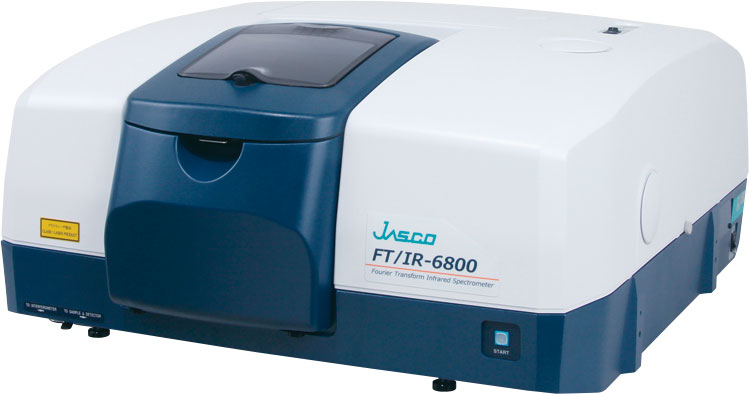
FT/IR-6800 FTIR spectrometer
Results
Figure 1 shows the ATR spectra of the polystyrene containing PBDE of 0 %, 15 %, and 30 % respectively. When additives such as calcium carbonate, barium carbonate, and silica (SiO2) are little, it is possible to measure without any trouble. However, in case of high concentration of those additives, it influences the accuracy of the quantitative analysis because the peaks of those additives overlap the shoulder of the peak for PBDE.
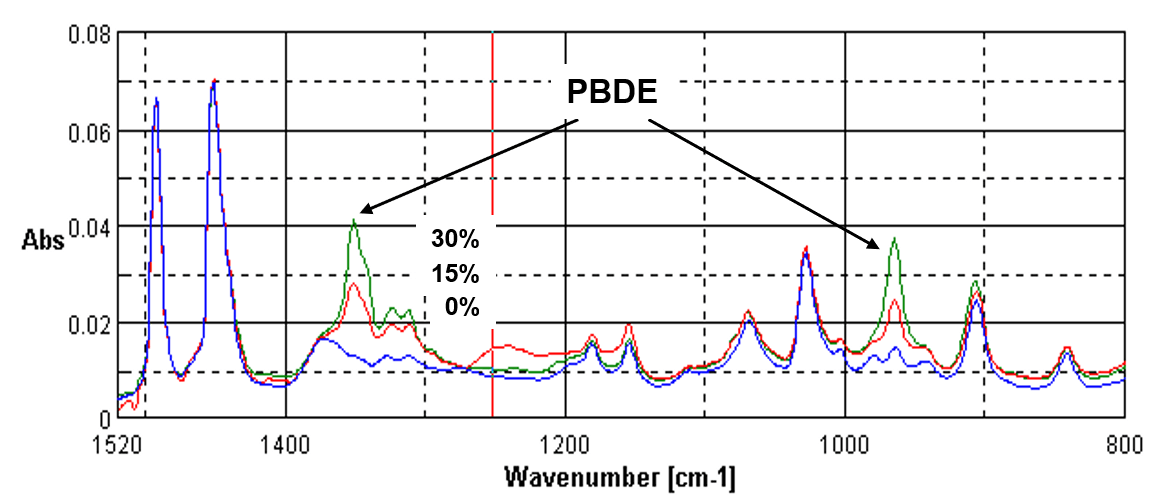
Figure 1. ATR spectra of polystyrene containing PBDE in the mid-IR range
Figure 2 shows the spectra of several brominated flame retardants (compounds) in the far-IR region. Since the peaks are shifted in wavenumber even by the little energy change in far-IR, far-IR spectroscopy is an appropriate way for the analysis of homologs and structuaral isomers. Various kinds of PBDE and PBB can be distinguished.
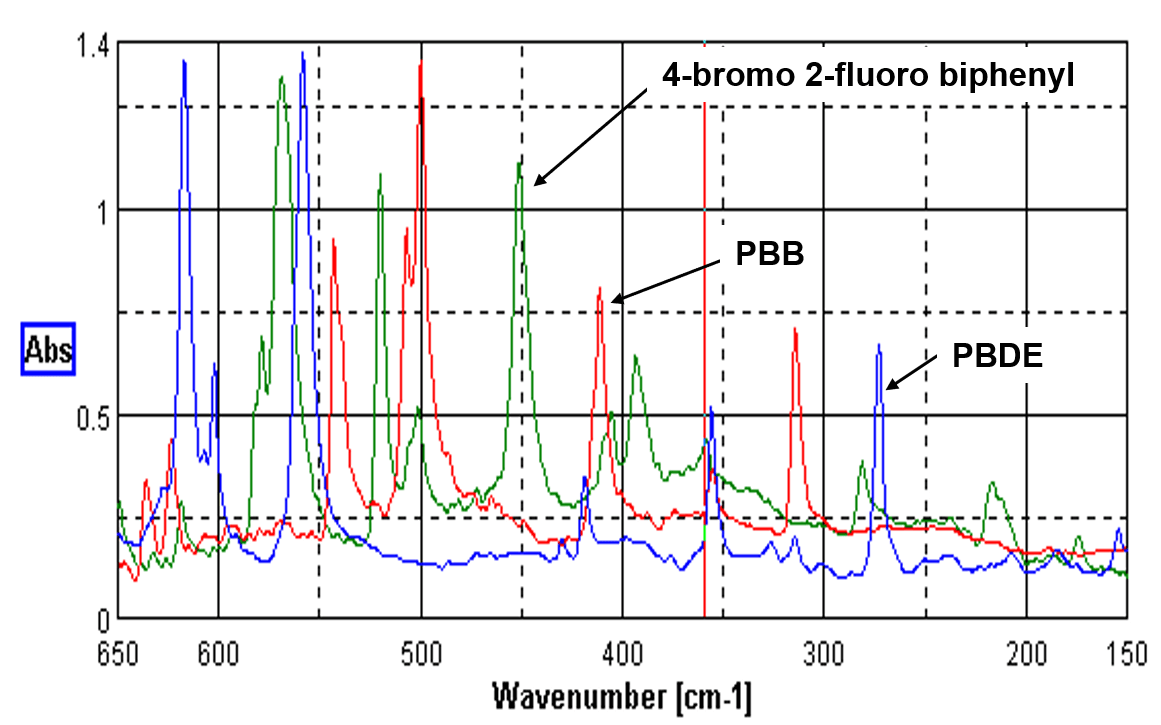
Figure 2. Spectra of several brominated flame retardants (compounds) in the far-IR region
Figure 3 shows the spectra of the polystyrene containing PBDE in the far-IR region. The peak at 335 cm-1 can be identified as a peak solely due to PBDE. Compared with the spectra obtained in the mid-infrared region, there appears almost no absorption of the polystyrene in this region, proving that there is no influence on the analysis.
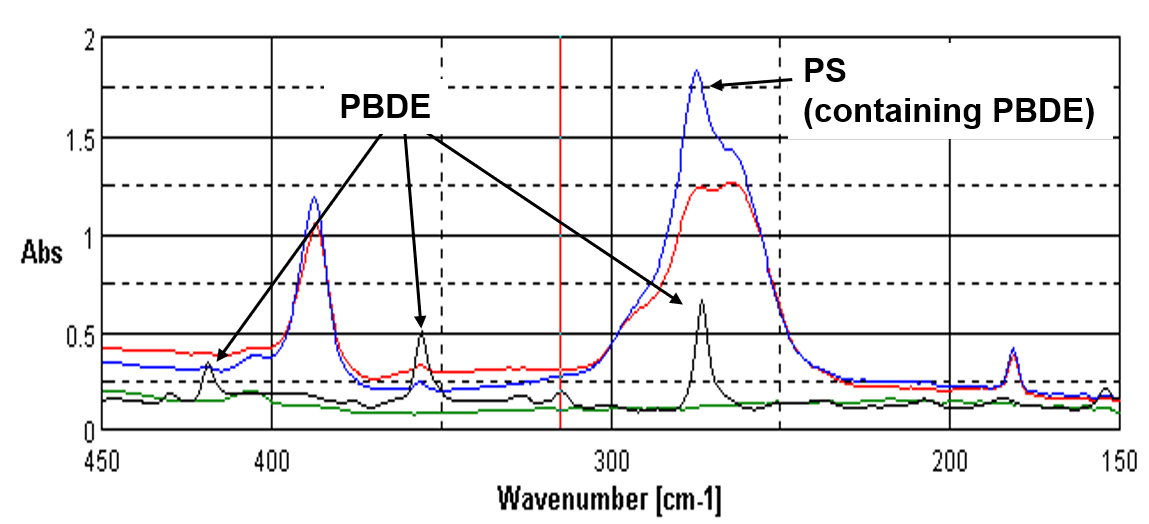
Figure 3. Spectra of the polystyrene containing PBDE in the far-IR region

